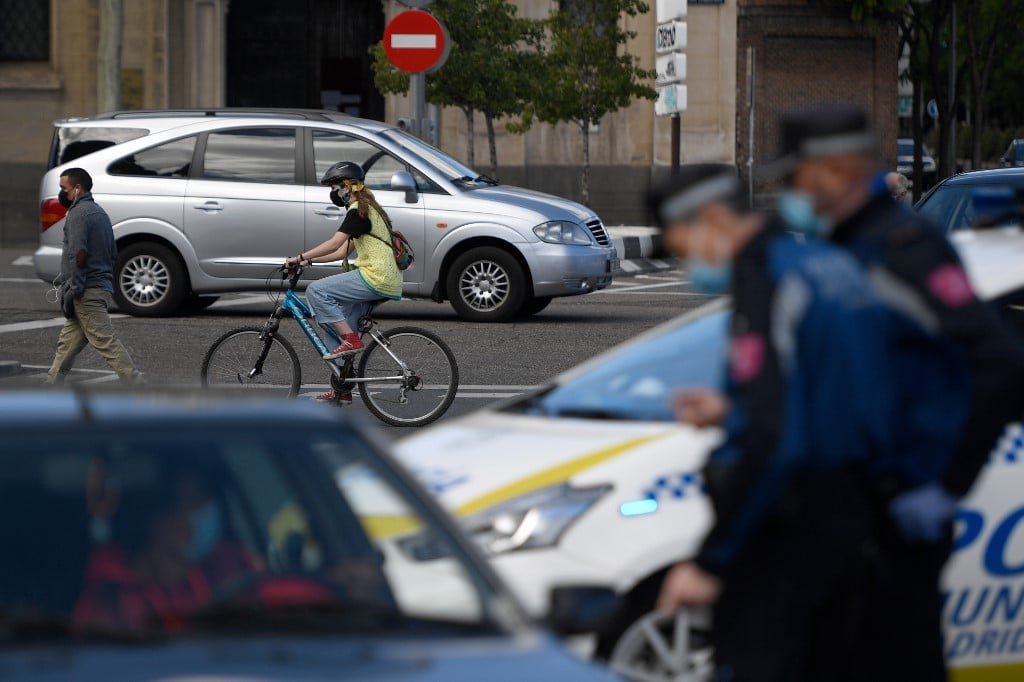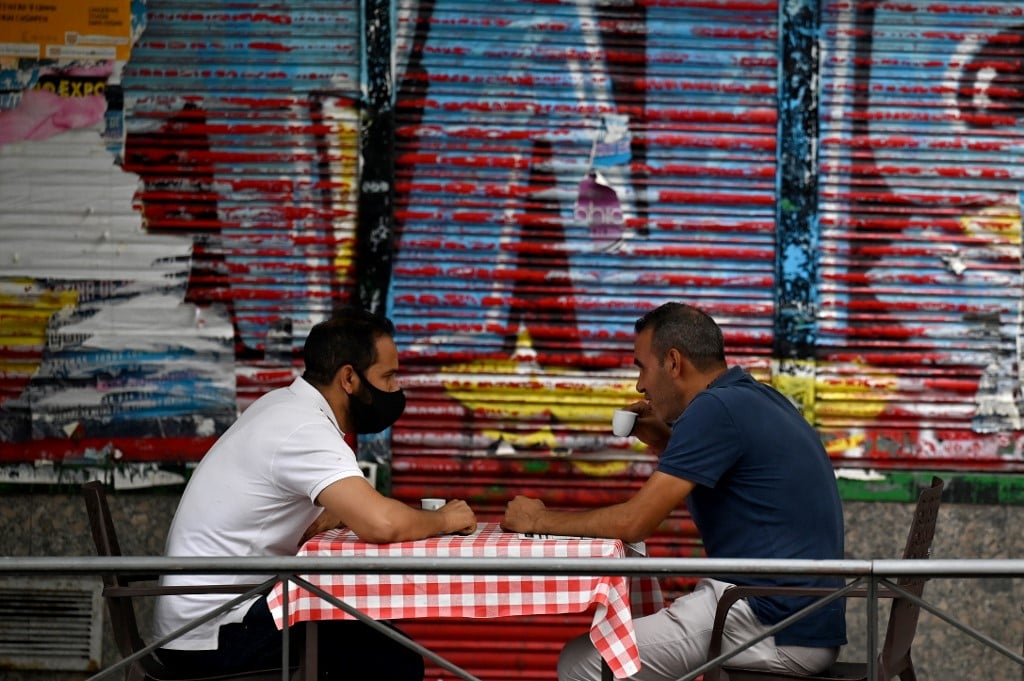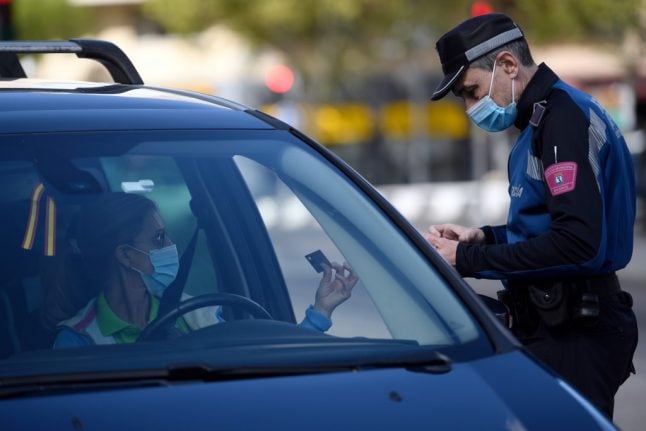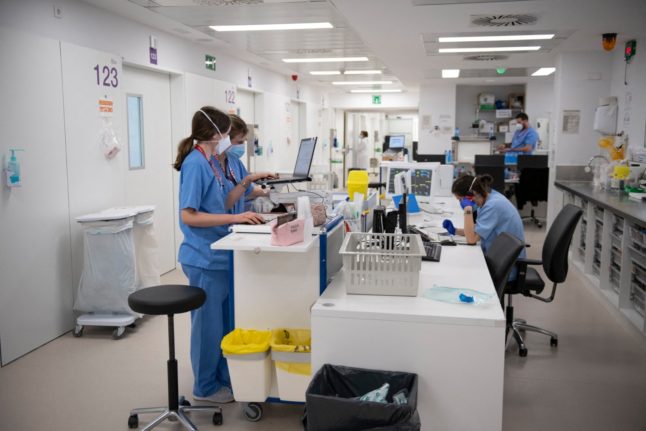“Nothing has changed, it's just like any other day in the neighbourhood,” shrugged Martinio Sanchez on a busy street in Madrid, a city in partial lockdown to slow the spread of the coronavirus.
“They should have done this in August and maybe we wouldn't be where we are right now,” said the 70-year-old as he walked his dog through the eastern neighbourhood of Ciudad Lineal.
Some 4.5 million people are affected by the closure, which came into force at 10:00 pm (2000 GMT) on Friday as the region battles a soaring infection rate of 730 cases per 100,000 people, compared with just 300 per 100,000 in the rest of Spain — in itself the highest rate in the European Union.
For the next 14 days, residents of the capital and nine nearby towns, will not be able to leave the city limits except for work, school or medical reasons.
But they are not confined to their homes and can circulate freely.
UPDATED Q&A: What you can and can't do under Madrid's new lockdown rule
Hours after the city limits were closed off to all non-essential traffic, masked police could be seen setting up temporary checkpoints and stopping cars for about 20 minutes before moving on, an AFP correspondent said.

People wearing face masks cross a street as local police officers control people's movement in a traffic checkpoint in Madrid, on October 3, 2020. OSCAR DEL POZO / AFP
“It affects me because because I work outside Madrid and I cannot move around with the freedom I'd like to,” 45-year-old sales manager Alberto Sanchez told AFPTV, saying the regional government should have acted much earlier.
“It could have been different if the Madrid region had done its homework and started hiring contact tracers four months ago and following advice from Europe and the government,” he fumed.
But inside the city, little appeared to have changed with life largely carrying on as normal on a brilliant October morning with a sharp autumnal chill in the area.
“Everything's open and you can't see police anywhere. We can move around Madrid but you can't go out to the nearby villages or to the mountains,” said Feliza Sanchez, 78.
“I don't know how this is going to change the situation we have at the moment.”
Sitting on a bar stool nursing a beer and a slice of Spanish omelette, Jorge Alvarez said the restrictions wouldn't have much impact on his life.
“In principle, nothing will change. I will continue to live a normal life because you can't lock yourself up inside your house and not work,” said Alvarez, a 49-year-old metal worker.
“Who knows if it will stop the virus spreading? But obviously people in the bar and restaurant industry are going to lose a lot of money,” he said.
Hospitality industry hit
For those in the bar and restaurant sector, who must reduce their indoor seating capacity by half and close by 11:00 pm, the new rules are a huge blow, particularly in a country where people tend to socialise late into the night.

Men have coffee at a cafe in the neighbourhood of Vallecas in Madrid on September 17, 2020. GABRIEL BOUYS / AFP
“It's going to affect us terribly,” said Baldomero Cubas, 50, who manages the Cerveceria Santa Ana in the city centre.
“With this measure many bars will think about closing, because if we were struggling before, now we can only have 60 percent seating capacity outside and 50 percent inside. And on top of that, with closing by 11, we're looking at a loss rather than breaking even.”
ANALYSIS: Why Madrid and not Barcelona is the epicentre of Spain's coronavirus second wave
And some fear they simply won't survive, such as Jorge Luis Ortega Pina, who owns the Degustando tavern, a tiny but popular bar in Ciudad Lineal with counter seating for barely 15 people.
“I will almost certainly have to close,” the 50-year-old says, standing behind a gleaming counter. He adds that he has done everything possible to try and create distance between customers.
“With these restrictions I will be lucky to bring in 1,500 euros ($1,750) a month and we are a family of four. I've no idea how I'm going to manage.”
People, he said, had been brought to their knees by the economic devastation caused by pandemic which had left many people struggling to survive, even with financial help from the government.
“There are going to be riots in the street,” he warned, saying even the charity sector was struggling with the sheer numbers of people in need.
“Caritas is overwhelmed, the Red Cross is overwhelmed, everything is just falling apart,” he said.
The corona virus has now killed nearly 32,000 people in Spain and has infected around 760,000.



 Please whitelist us to continue reading.
Please whitelist us to continue reading.
Member comments